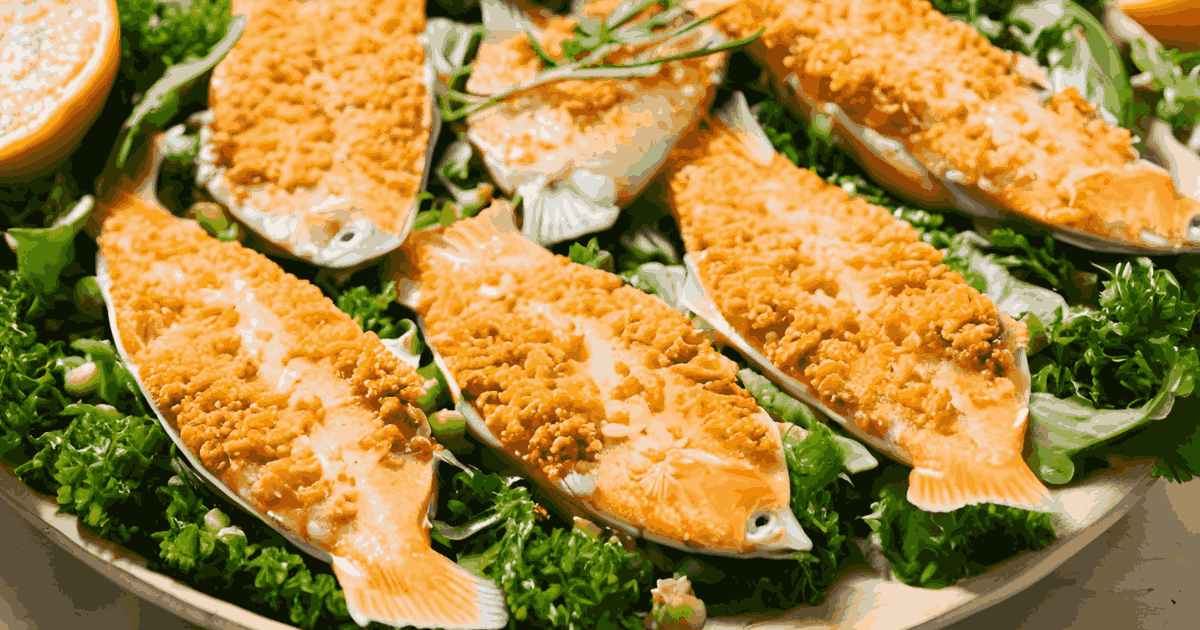Feeding your fish the right diet is crucial for their growth, health, and color vibrancy. While there are many commercial fish foods on the market, making your own homemade fish food recipes allows you to control the ingredients and offer customized nutrition. In this article, we’ll walk you through six unique fish food recipes, each designed to suit different fish species and dietary needs.
Table of Contents
What is a Fish Food Recipe?
A fish food recipe is a blend of ingredients tailored to the nutritional requirements of your fish. Different types of fish, like herbivores, carnivores, and omnivores, need different nutrients. Making your own fish food at home allows you to provide targeted nutrients, enhance water quality, and ensure the freshest ingredients for your fish.
Benefits of Homemade Fish Food Recipes
Making fish food at home has several perks:
- Cost Savings: Homemade fish food can be more cost-effective than store-bought options.
- Quality Control: You know exactly what’s going into the food.
- Environmental Impact: Reduces packaging waste associated with commercial fish food.
Recipe 1: Vegetable-Based Fish Food

Ideal for: Herbivorous and omnivorous fish
- Ingredients:
- 1 cup spinach
- 1 cup peas
- 1/2 cup carrots
- 1 tablespoon spirulina powder
- Instructions:
- Steam spinach, peas, and carrots until soft.
- Blend the ingredients until smooth.
- Add spirulina powder and blend again.
- Pour the mixture into an ice cube tray and freeze.
Nutritional Benefits: This recipe is packed with vitamins A and C, which help boost the immune system and improve color vibrancy.
Recipe 2: Protein-Packed Fish Food

Ideal for: Carnivorous and omnivorous fish
- Ingredients:
- 1/2 cup shrimp
- 1/2 cup fish fillets (tilapia or cod)
- 1/4 cup peas
- 1 tablespoon gelatin powder
- Instructions:
- Blend shrimp, fish fillets, and peas into a paste.
- Dissolve gelatin in warm water and mix it with the paste.
- Pour into a shallow dish and refrigerate until set, then cut into small pieces.
Nutritional Benefits: High in protein, this recipe supports muscle growth and healthy development in carnivorous fish.
Recipe 3: Algae and Spirulina Blend
Ideal for: All fish types, especially algae eaters
- Ingredients:
- 1 cup fresh or dried algae
- 1 tablespoon spirulina powder
- 1/4 cup peas
- 1 tablespoon gelatin powder
- Instructions:
- Blend the algae, spirulina, and peas.
- Add dissolved gelatin to the mixture and pour it into a tray.
- Freeze for convenient storage.
Nutritional Benefits: Provides antioxidants and essential fatty acids that are great for the immune system.
Recipe 4: Gelatin-Based Fish Food for Fry
Ideal for: Young fish (fry)
- Ingredients:
- 1 cup spinach
- 1/2 cup boiled egg yolks
- 1 tablespoon gelatin powder
- Instructions:
- Blend spinach and egg yolks until smooth.
- Add dissolved gelatin to bind the ingredients.
- Pour into a tray and freeze.
Nutritional Benefits: This recipe has the perfect mix of protein and vitamins for rapid growth in fry.
Recipe 5: Shrimp and Seafood Mix
Ideal for: Saltwater fish and omnivores
- Ingredients:
- 1/2 cup shrimp
- 1/2 cup mussels
- 1/4 cup clams
- 1 tablespoon seaweed
- Instructions:
- Blend all ingredients until smooth.
- Freeze the mixture in an ice cube tray for easy portioning.
Nutritional Benefits: Provides essential minerals like iodine and zinc for saltwater fish.
Recipe 6: Vitamin-Enriched Fish Flakes
Ideal for: All fish types
- Ingredients:
- 1/2 cup fish fillets
- 1/4 cup spinach
- 1/4 cup carrots
- Vitamin powder (optional)
- Instructions:
- Blend fish, spinach, and carrots until smooth.
- Add vitamin powder if desired.
- Spread the mixture on a baking sheet and dehydrate until flaky.
Nutritional Benefits: Contains a range of vitamins and minerals, great for overall health.
Tips for Storing Homemade Fish Food
- Freeze for Freshness: Most homemade fish foods freeze well. Use ice cube trays for easy portion control.
- Use Within 3 Months: Homemade fish food is perishable and should be used within a few months for optimal nutrition.
- Label and Date: Keeping track of when you made each batch helps ensure freshness.
Common Mistakes to Avoid
- Overfeeding: Homemade food can be rich; overfeeding can lead to water pollution.
- Unsafe Ingredients: Avoid ingredients like onions, garlic, or oils that can harm fish.
How to Serve Homemade Fish Food
- Small Portions: Start with a tiny amount to see how your fish respond.
- Break Into Pieces: Freeze-dried or gelatin-based foods can be cut to size depending on your fish.
Health Benefits of Homemade Fish Food
Feeding your fish homemade food can lead to:
- Enhanced Color: Nutrient-rich ingredients help bring out natural hues.
- Stronger Immune Systems: Fresh vegetables and protein support immune health.
- Better Growth: High-quality ingredients promote healthy growth rates.
Conclusion
Homemade fish food recipes are a great way to improve your fish’s diet with quality ingredients tailored to their needs. These recipes not only provide nutritional benefits but also allow you to have complete control over what your fish consume. Plus, it’s an affordable and eco-friendly alternative to store-bought options.
FAQs
1. How long does homemade fish food last?
Most homemade fish food can last 2–3 months if stored properly in the freezer.
2. What fish types benefit most from homemade food?
All fish can benefit, but herbivores, carnivores, and young fry especially thrive with tailored nutrition.
3. Are there risks with homemade fish food?
Avoid adding ingredients toxic to fish, like onions or too much fat. Ensure all ingredients are fresh.
4. Can I freeze fish food recipes?
Yes! Freezing is recommended for longer shelf life.
5. How often should I feed homemade fish food?
Feed in small amounts once or twice daily, adjusting based on your fish’s needs.

